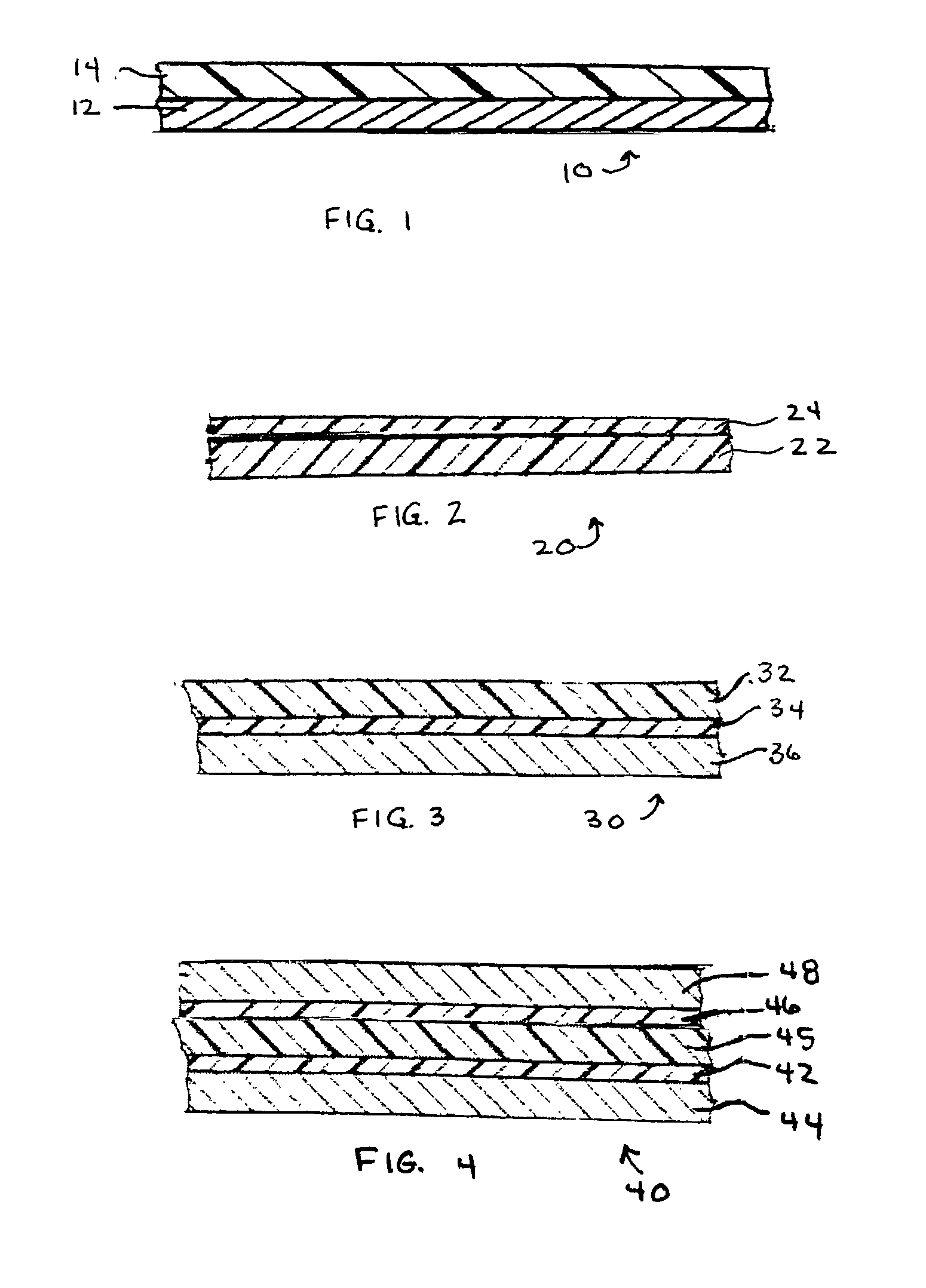Method for improving bonding of circuit substrates to metal and articles formed thereby
a technology of metal and substrate, which is applied in the field of improving the bonding of circuit substrates to metal and articles formed by them, can solve the problems of low peel strength between the conductive metal surface and the substrate, reduced peel strength, and inapplicability to all resins, etc., to achieve excellent properties, improve bond strength, and increase peel strength
- Summary
- Abstract
- Description
- Claims
- Application Information
AI Technical Summary
Benefits of technology
Problems solved by technology
Method used
Image
Examples
example 1
[0050] A 10 wt % solution of Royalene 301T in xylene was prepared. Five parts of Lupersol 130 per 100 parts of Royalene 301T was added to the solution. The solution was applied to 0.5 oz. copper foil (TAX available from Yates Foil, treated by the manufacturer with silane). The coated copper foil was dried under ambient conditions to form an adhesion promoting layer. The weight of the adhesion promoting layer was approximately 5.9 grams per square meter. An RO4350B prepreg (a polybutadiene-based thermosetting composition available from Rogers Corporation, Rogers Conn.) was applied and heated under pressure to effect lamination. Lamination conditions were as follows:
[0051] Initial conditions were 93.degree. C. (200.degree. F.) and 6.9 Mega Pascals (MPa) (1000 pounds per square inch (psi)).
[0052] Temperature was ramped from 93.degree. C. to 174.degree. C. (345.degree. F.) at 1.1.degree. C. (2.degree. F.) per minute;
[0053] Dwell at 174.degree. C. for 15 minutes;
[0054] Ramp to 246.degree...
example 2
[0059] Example 2 was prepared as in Example 1 except the 0.5 oz. foil employed was TWX copper foil, also available from Yates Foil. TWX foil is manufactured with a zinc treatment (thermal barrier) on the matte side of the foil. The copper foil side having the zinc treatment was placed in contact with the adhesion promoting layer.
example 3
[0060] Example 3 was prepared as in Example 1 except the elastomeric polymer employed was Royalene 551 and the TAX foil had no manufacturer applied silane.
PUM
| Property | Measurement | Unit |
|---|---|---|
| Linear density | aaaaa | aaaaa |
| Frequency | aaaaa | aaaaa |
| Fraction | aaaaa | aaaaa |
Abstract
Description
Claims
Application Information
 Login to View More
Login to View More - R&D
- Intellectual Property
- Life Sciences
- Materials
- Tech Scout
- Unparalleled Data Quality
- Higher Quality Content
- 60% Fewer Hallucinations
Browse by: Latest US Patents, China's latest patents, Technical Efficacy Thesaurus, Application Domain, Technology Topic, Popular Technical Reports.
© 2025 PatSnap. All rights reserved.Legal|Privacy policy|Modern Slavery Act Transparency Statement|Sitemap|About US| Contact US: help@patsnap.com



